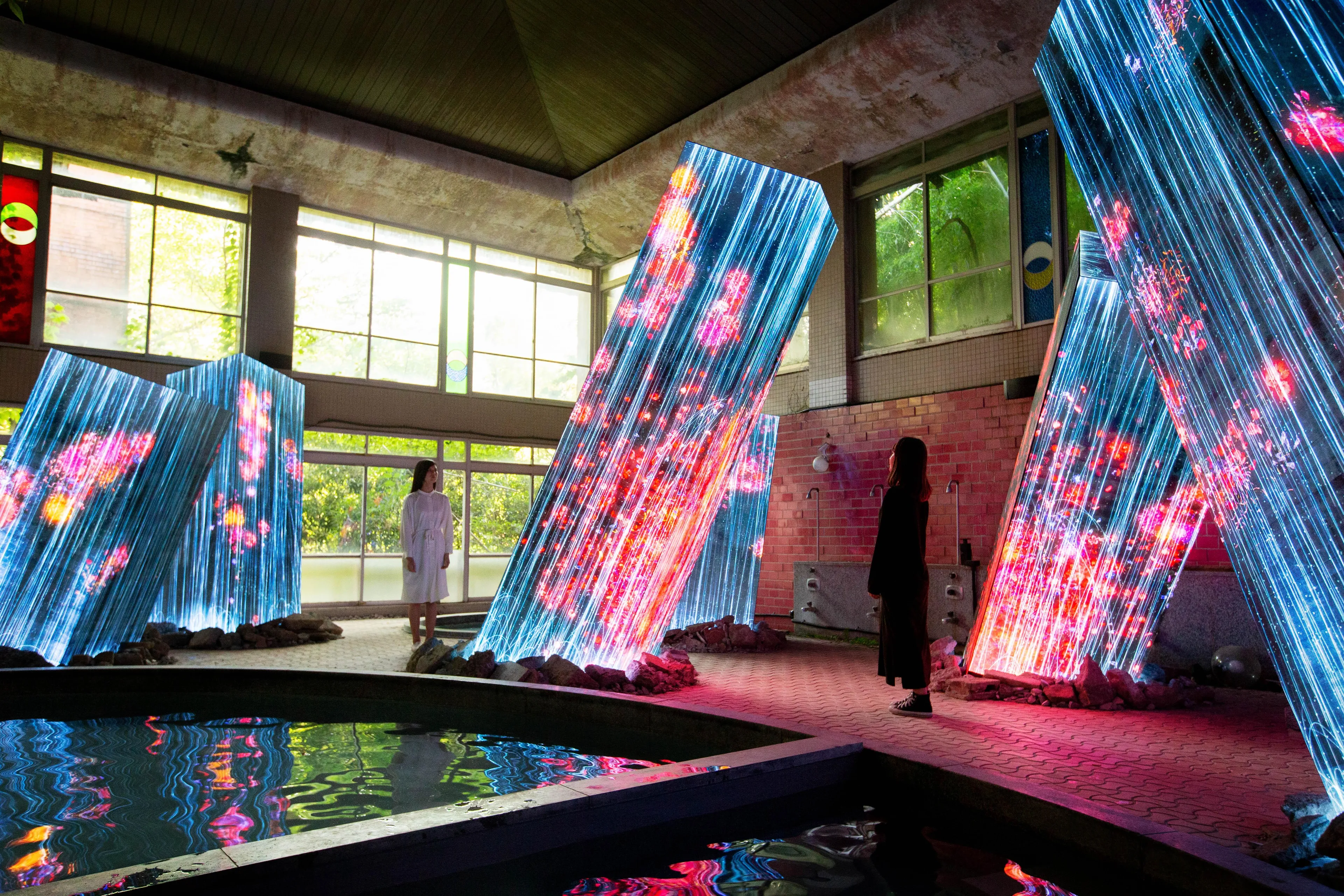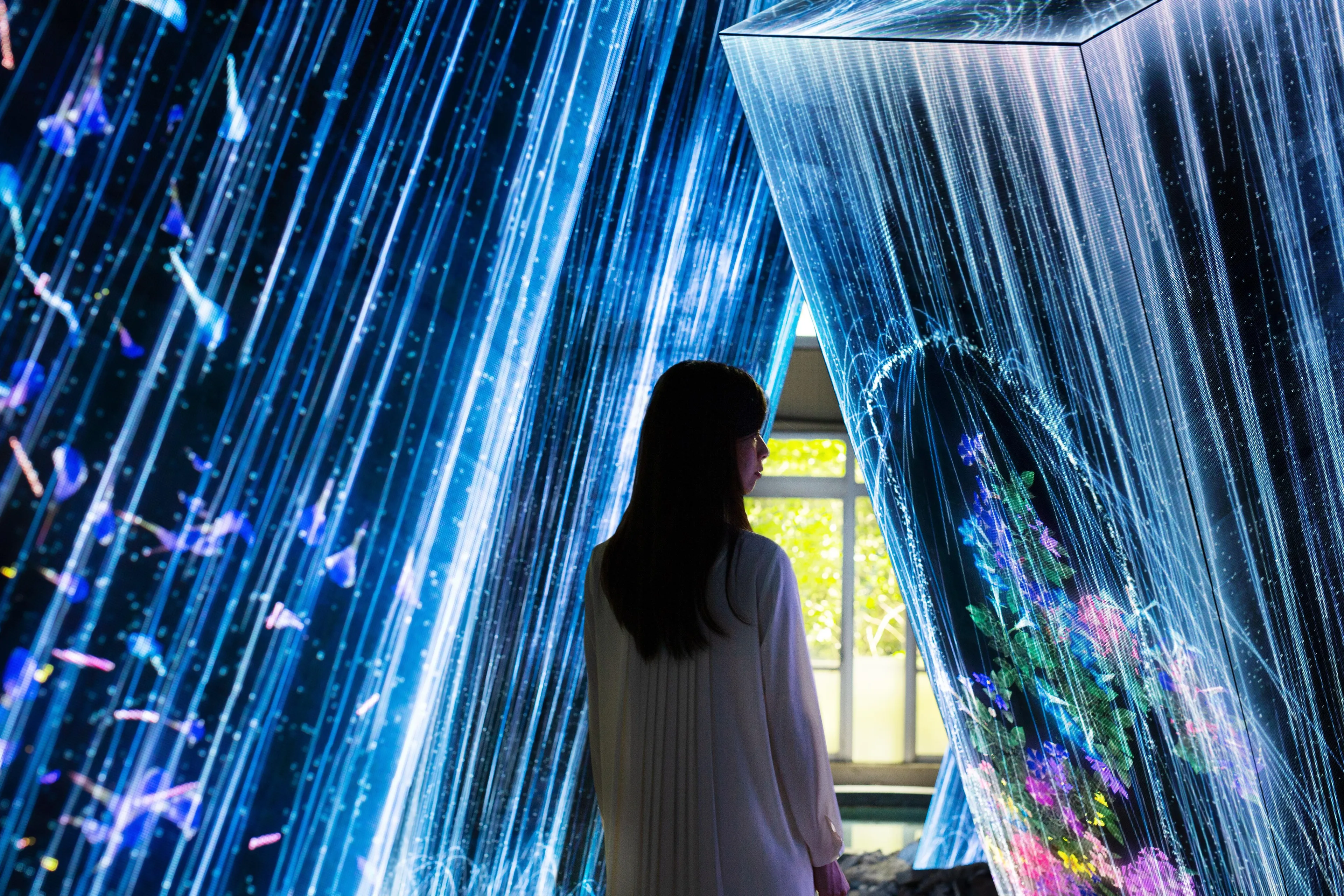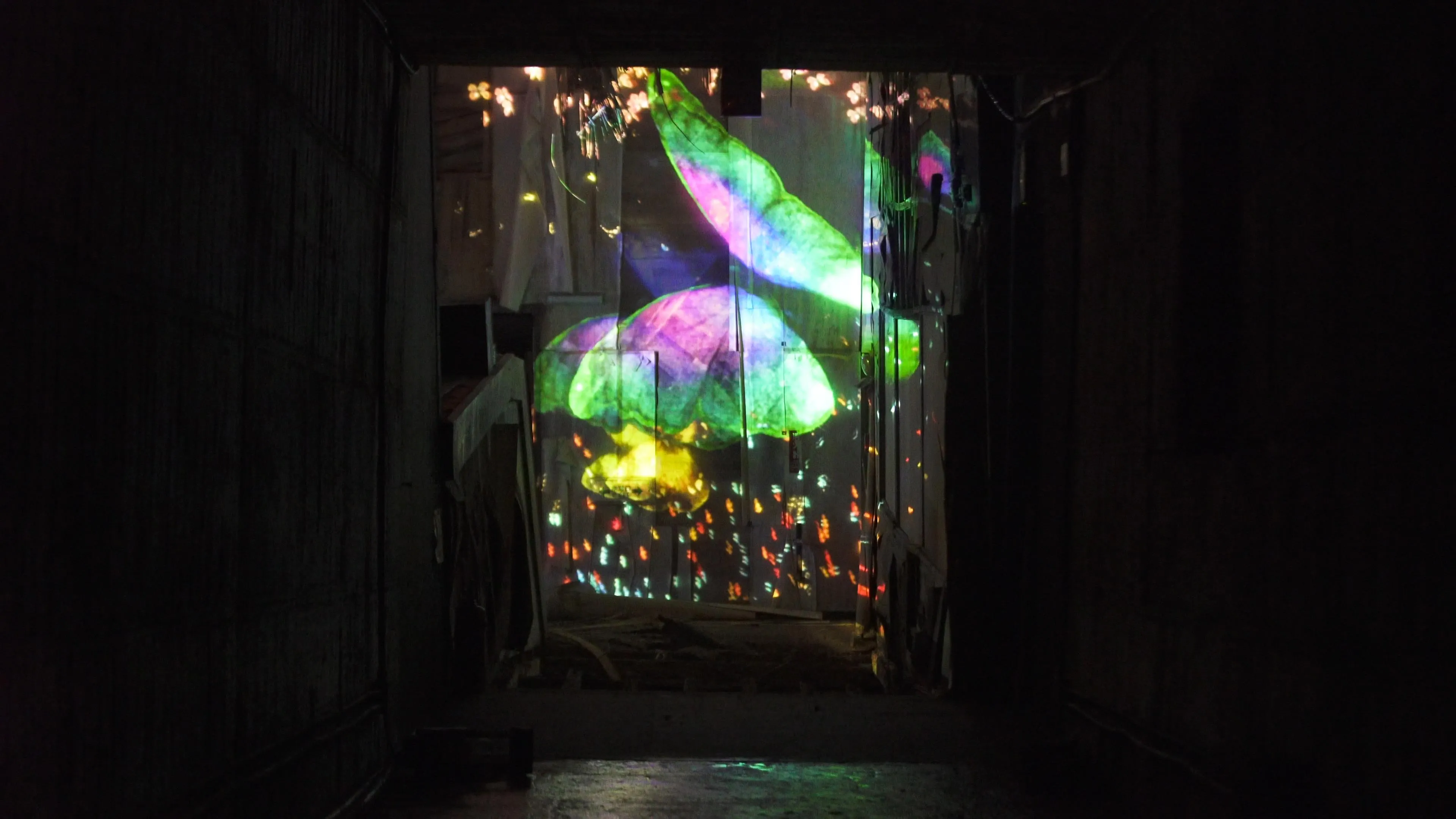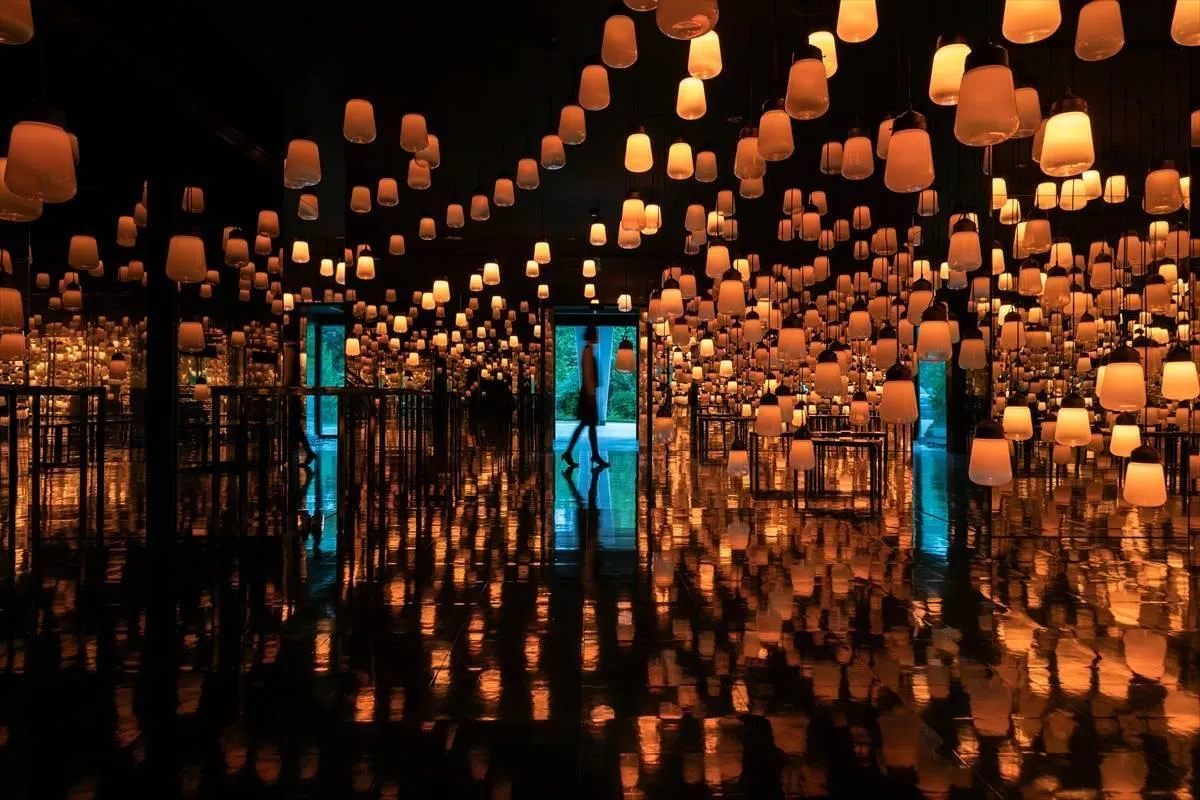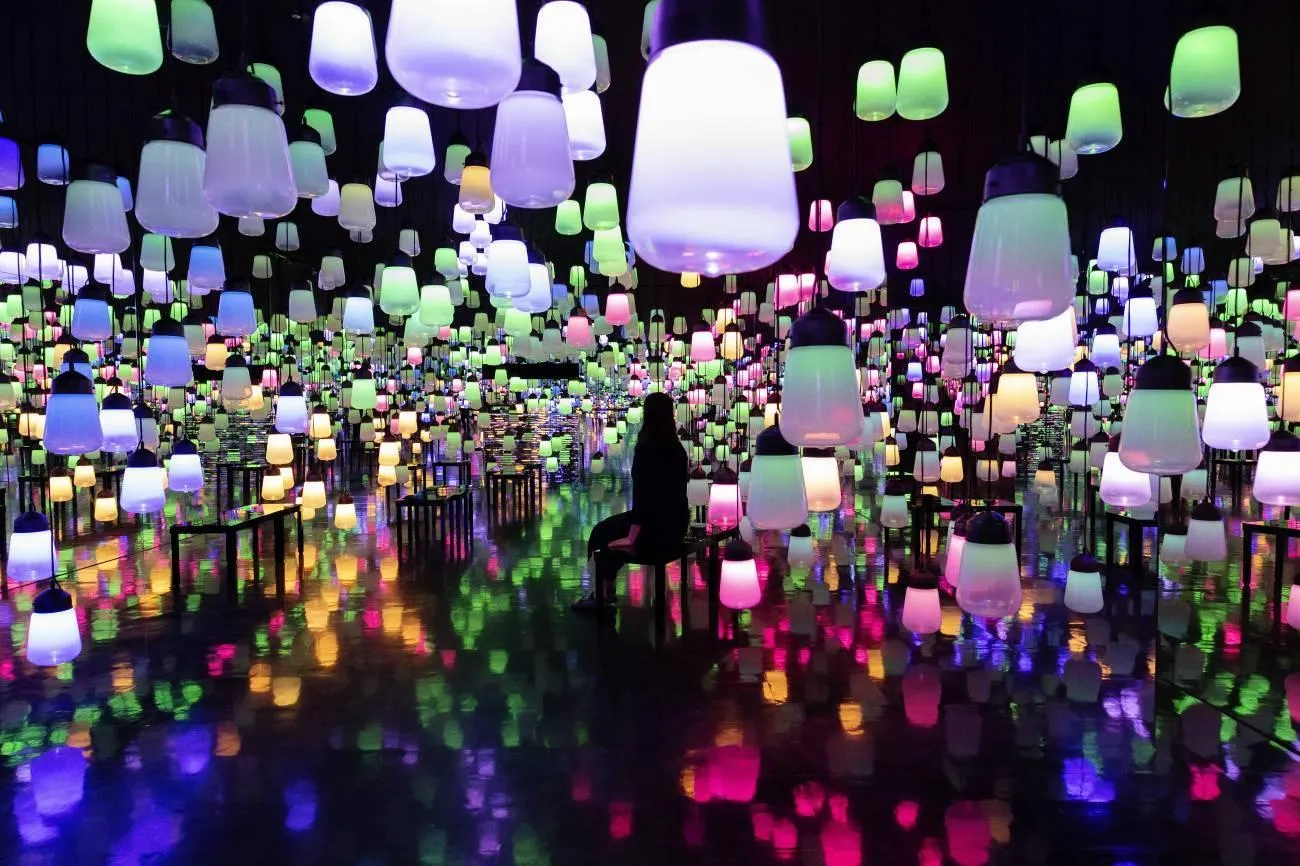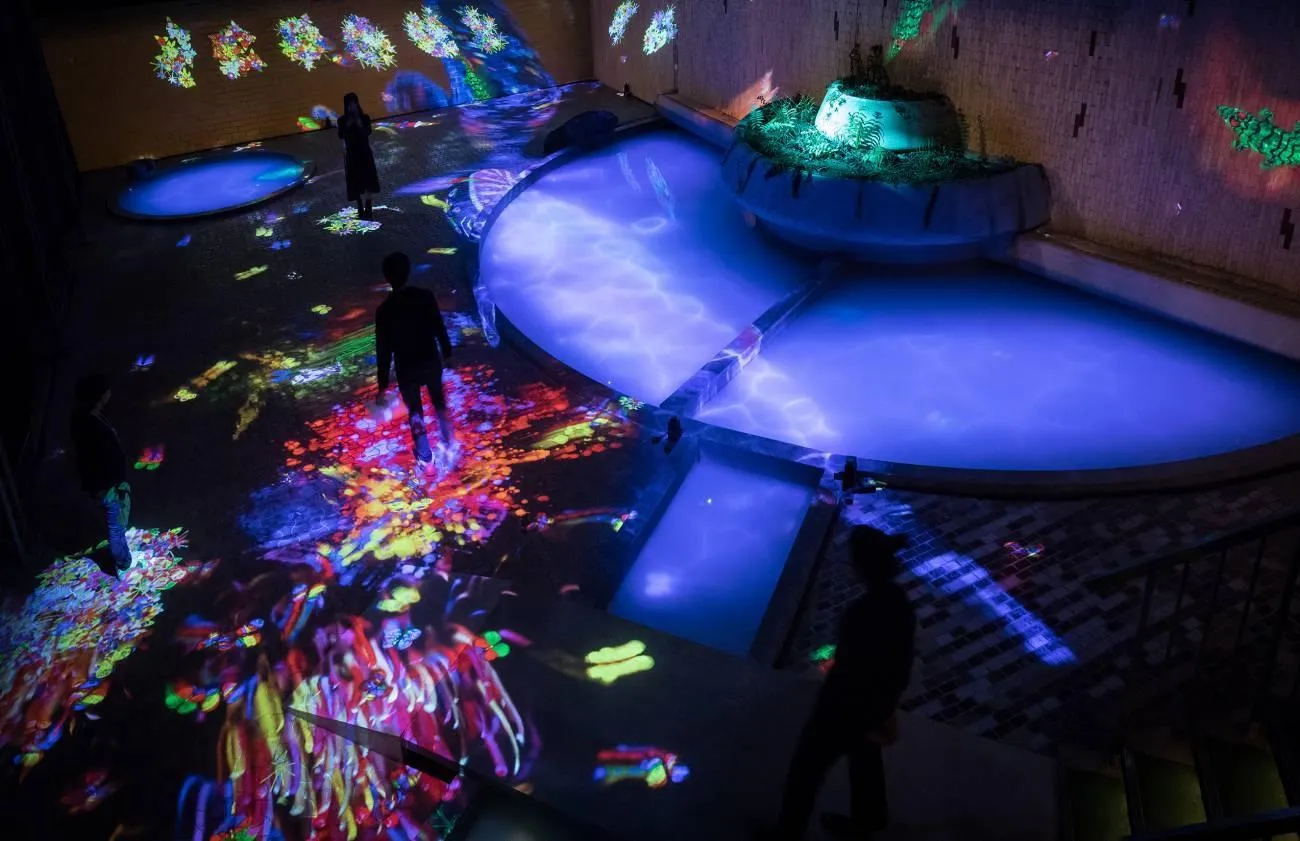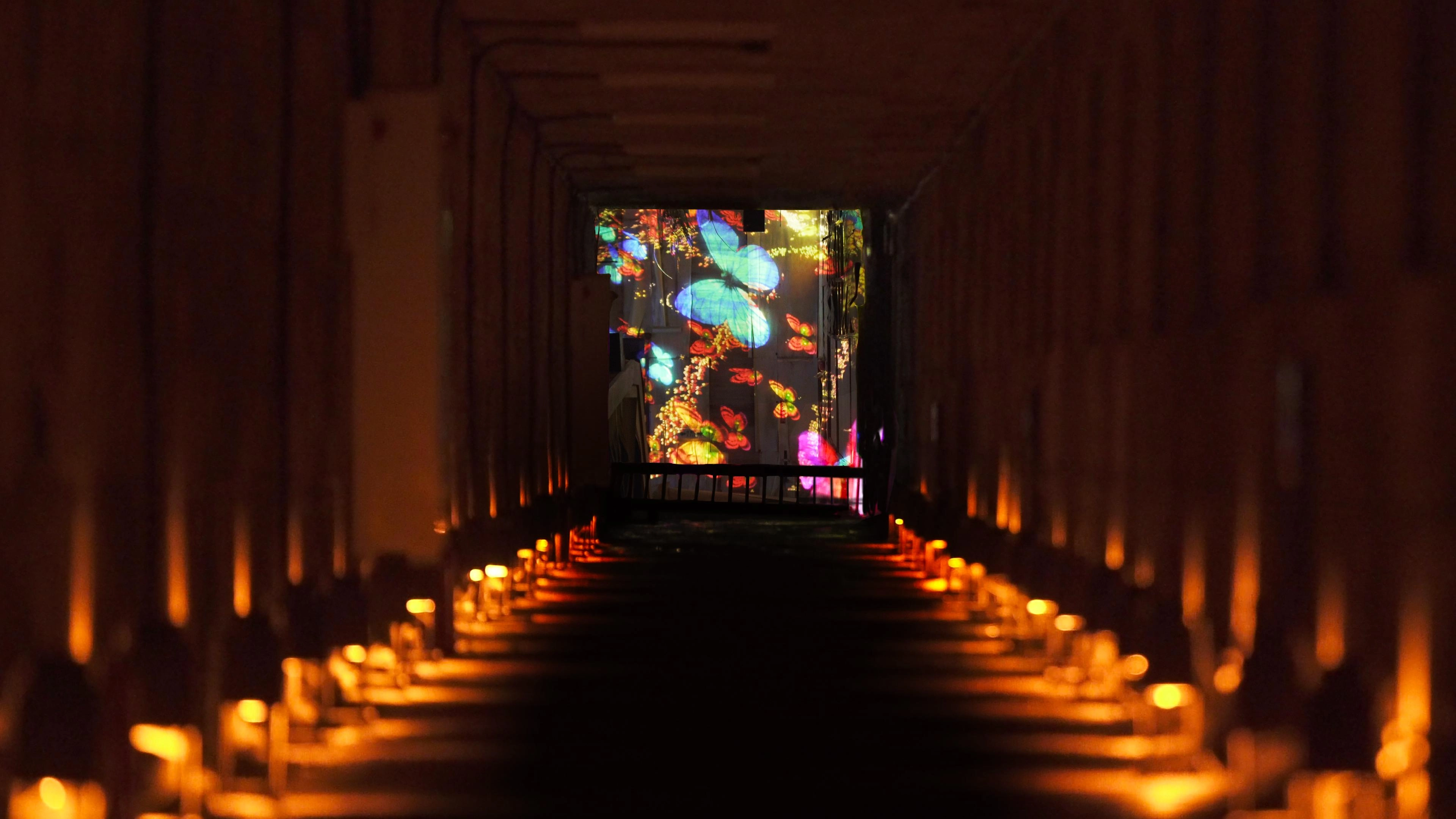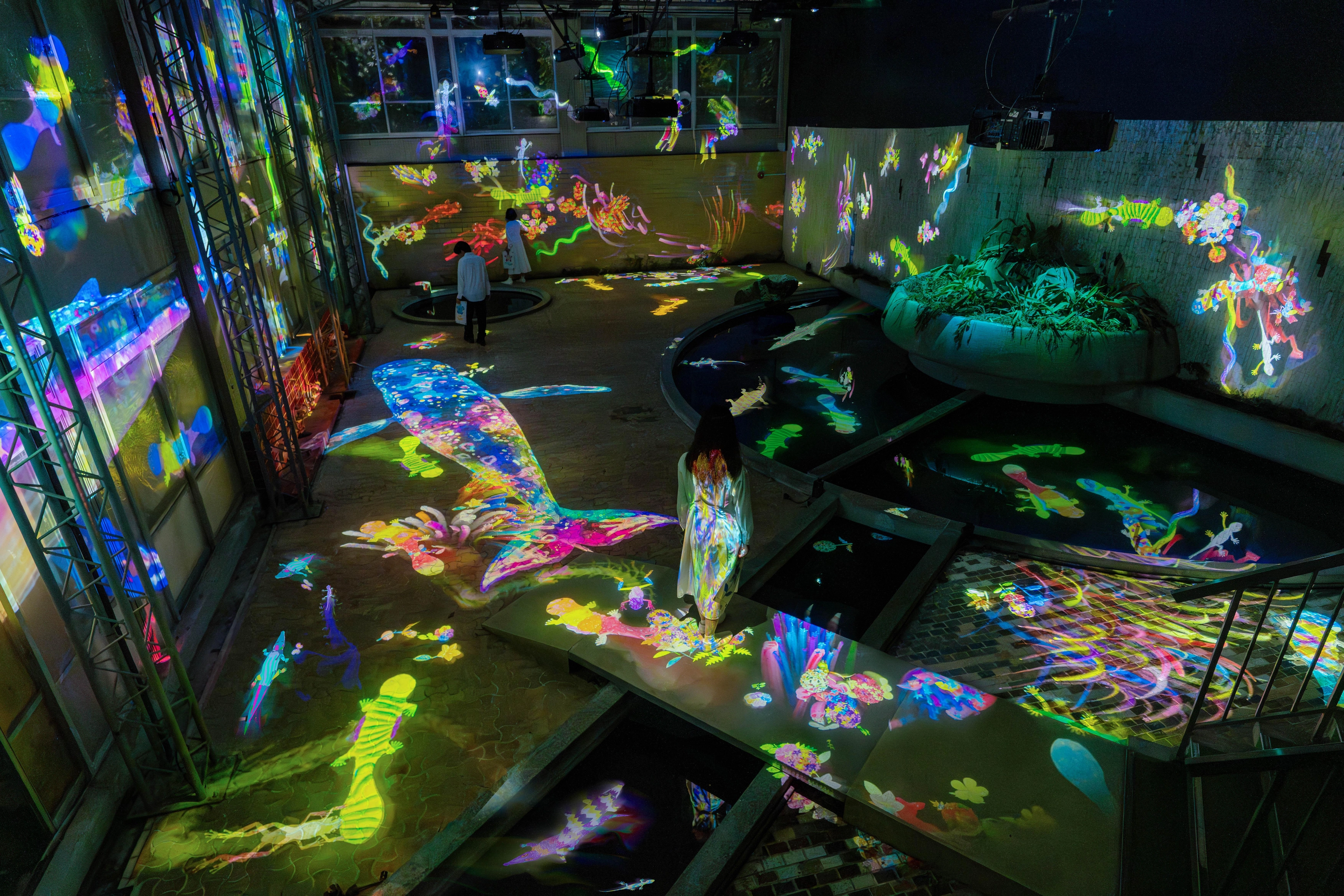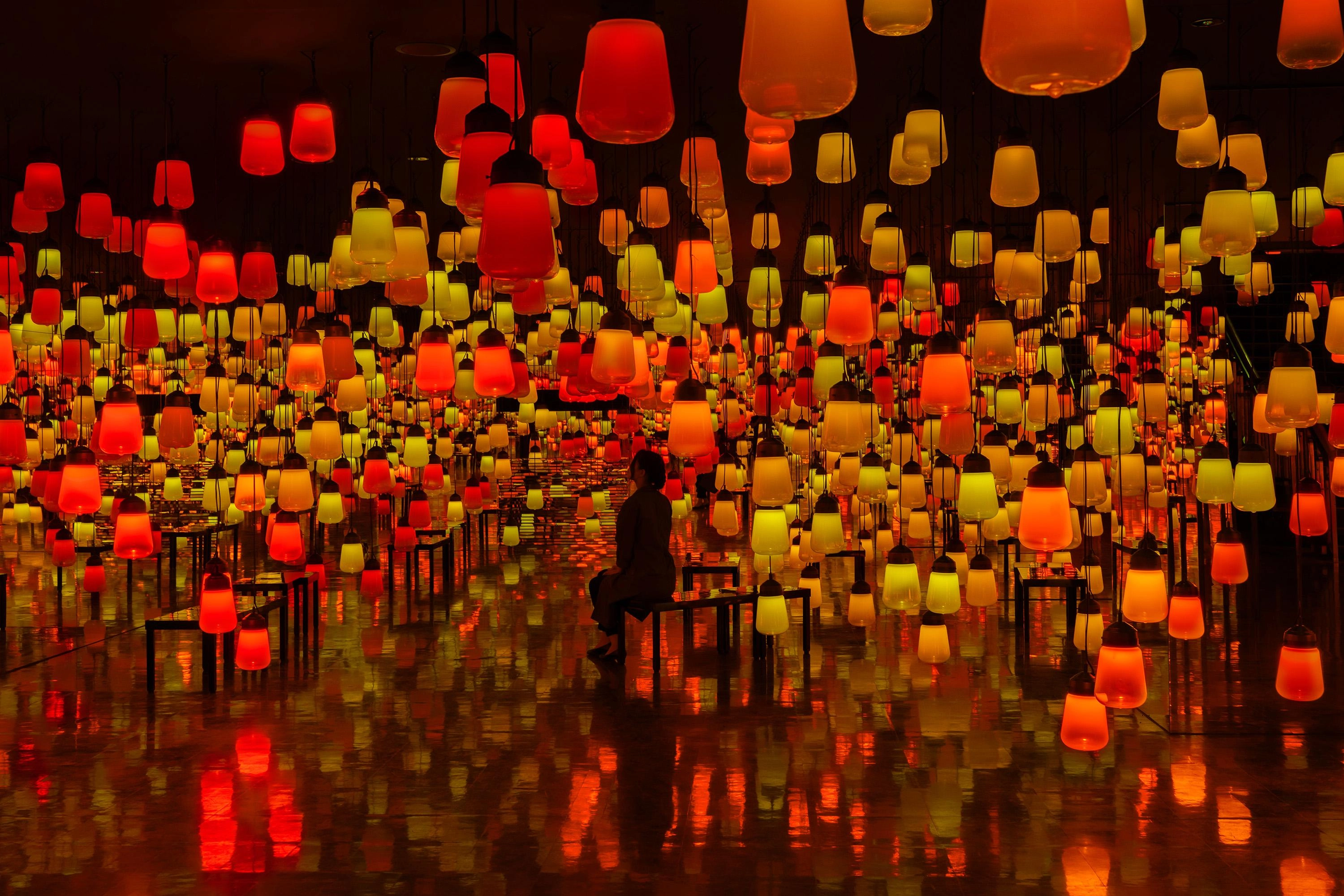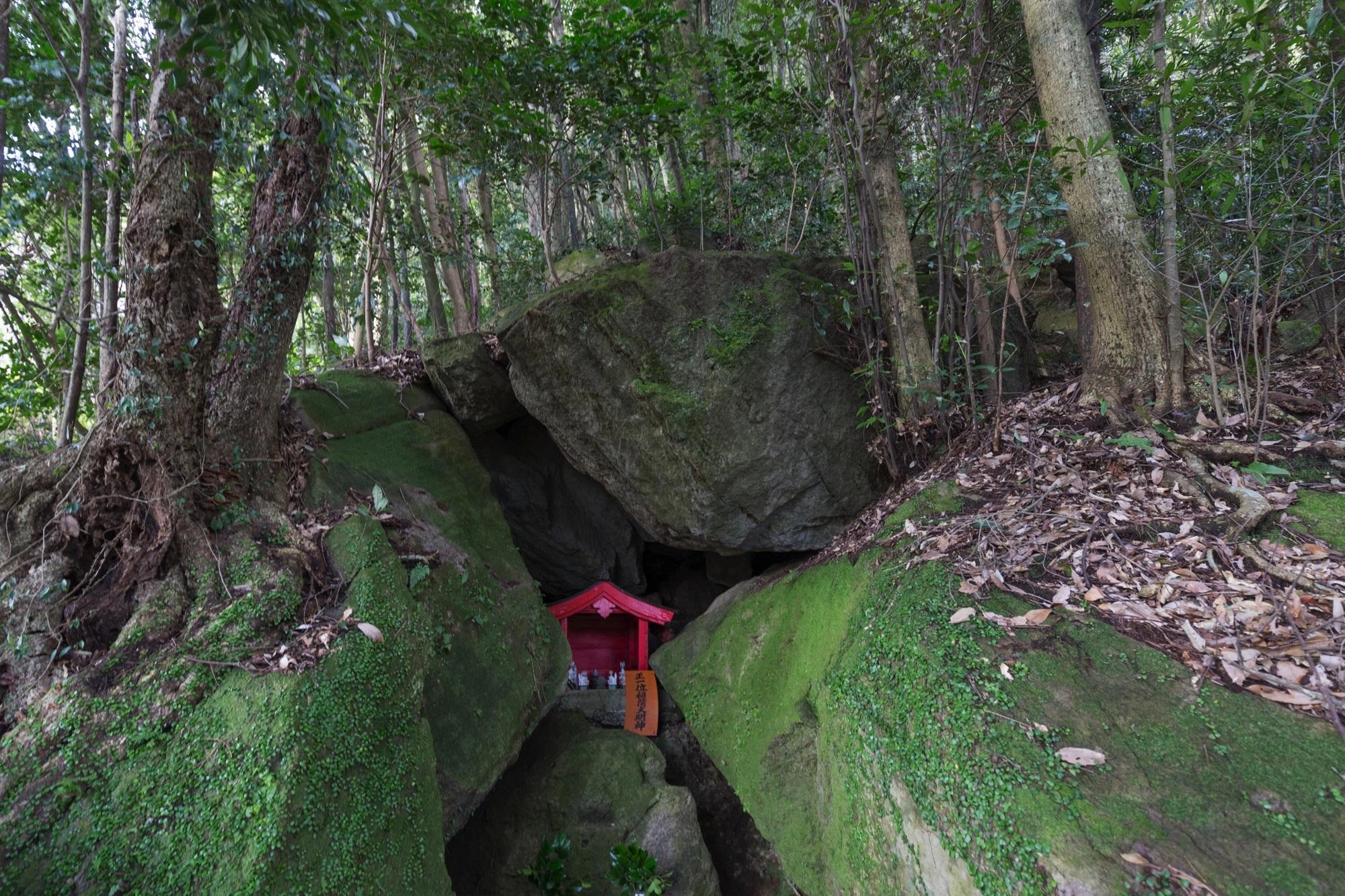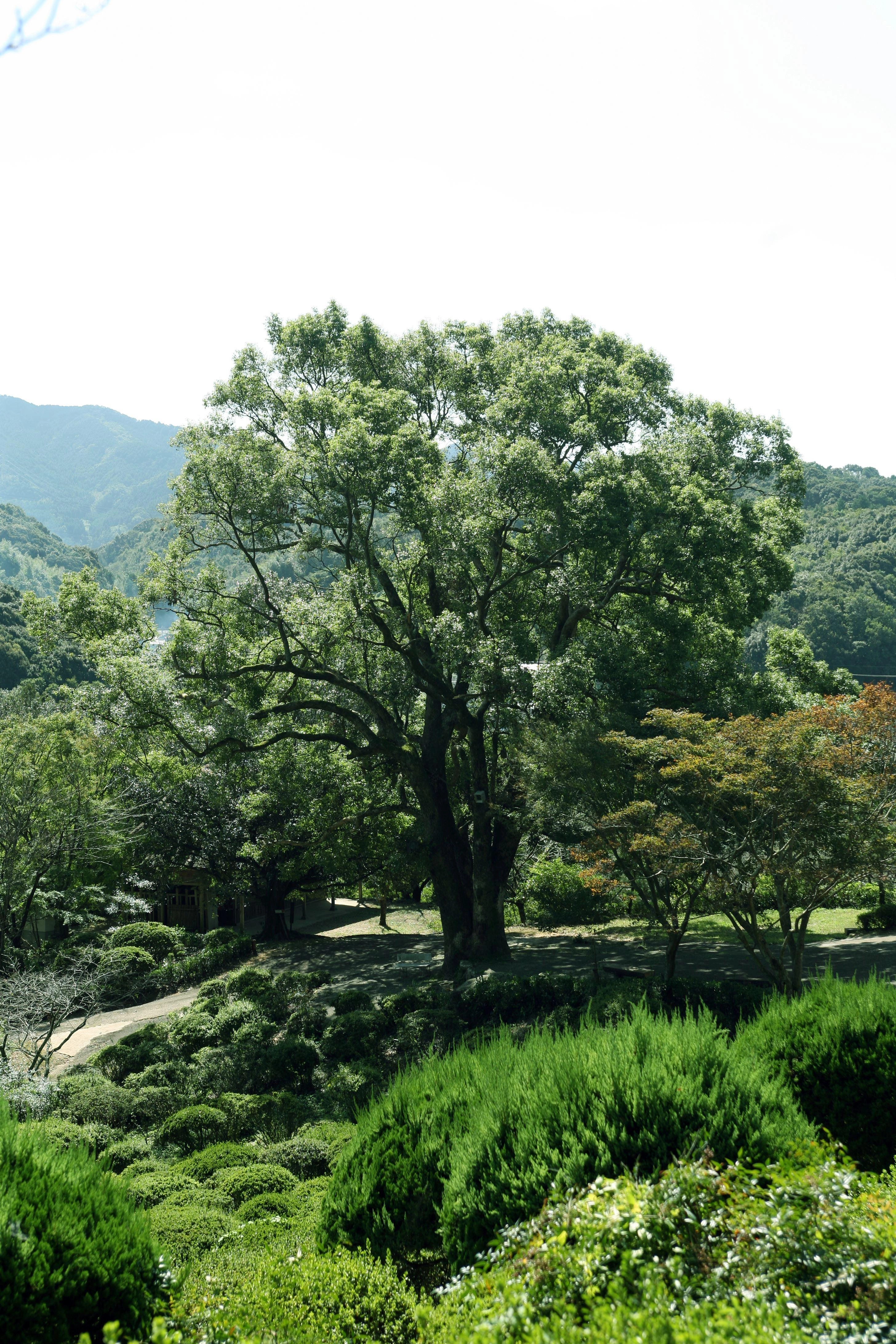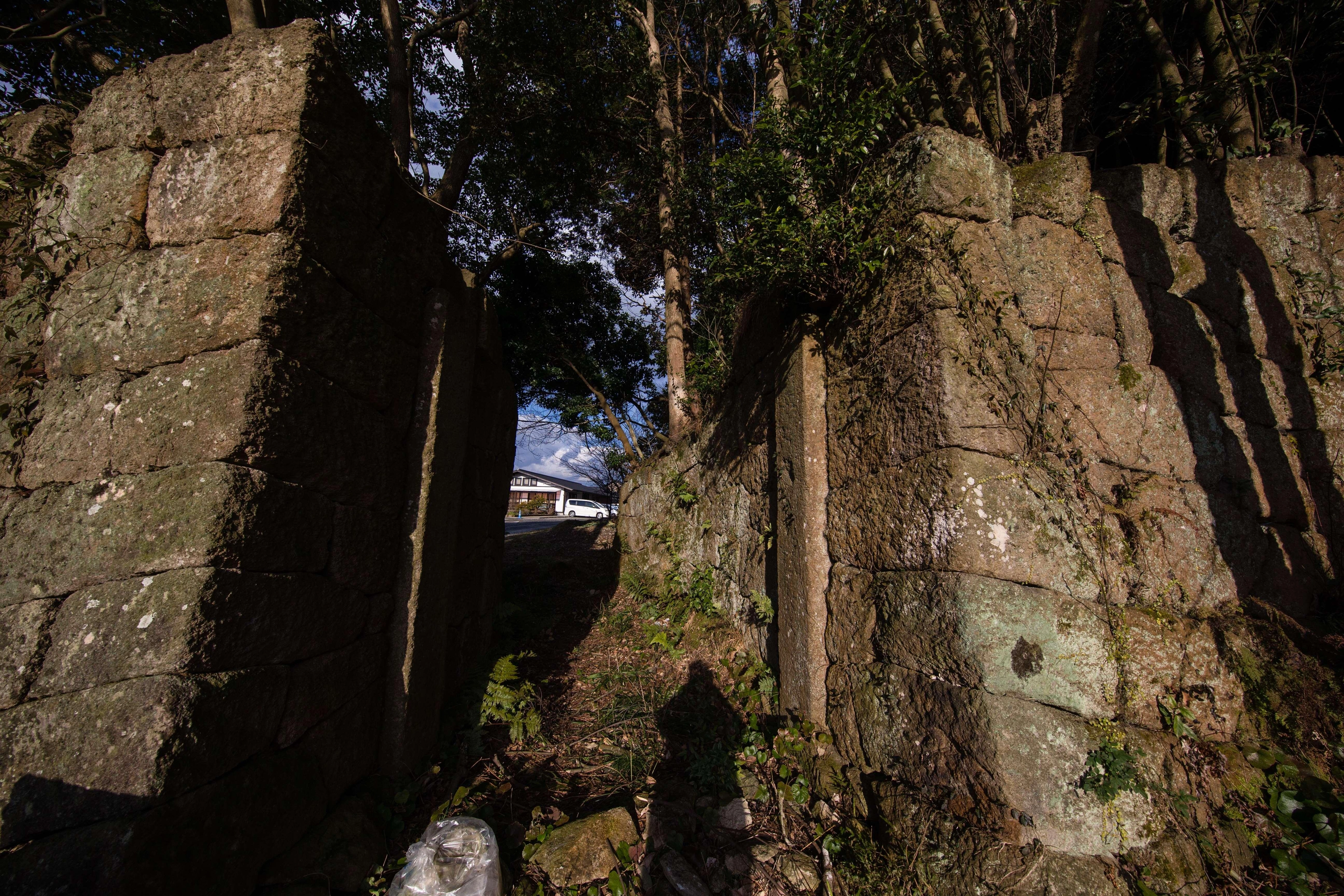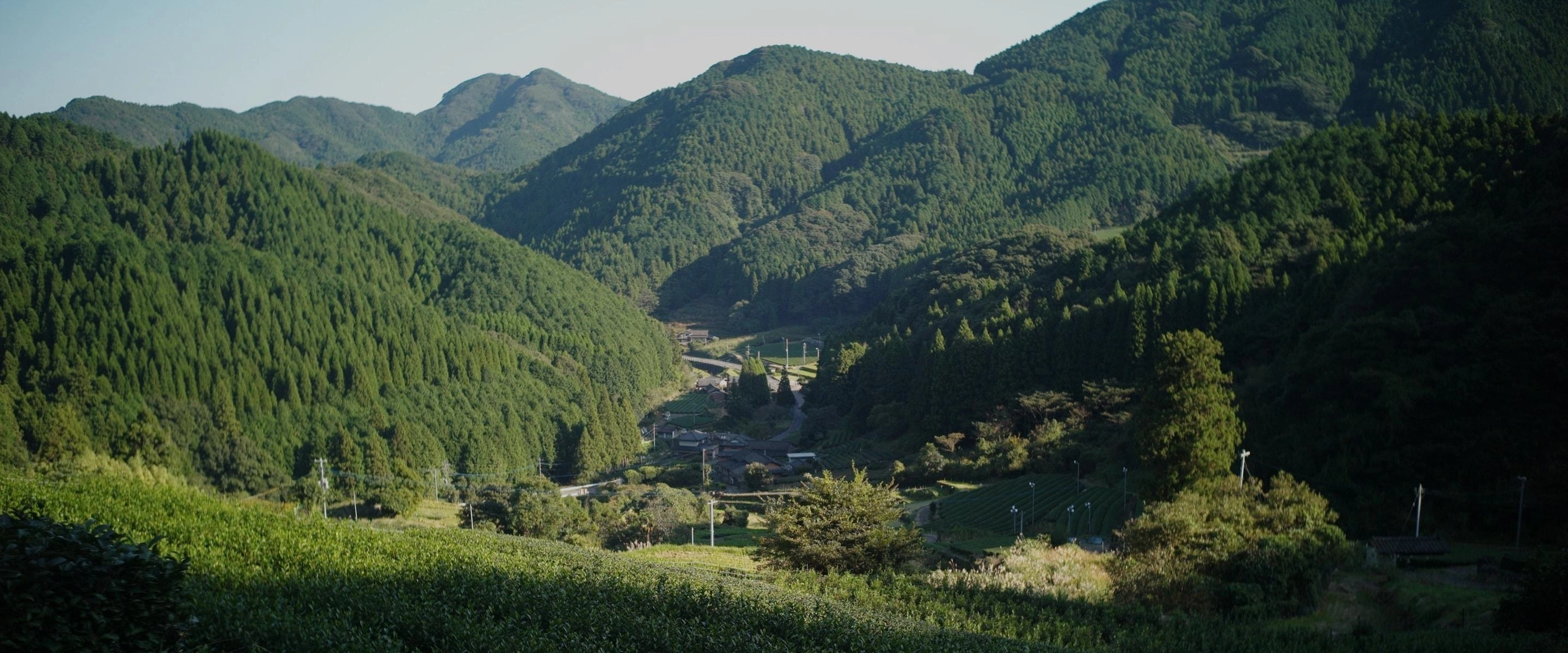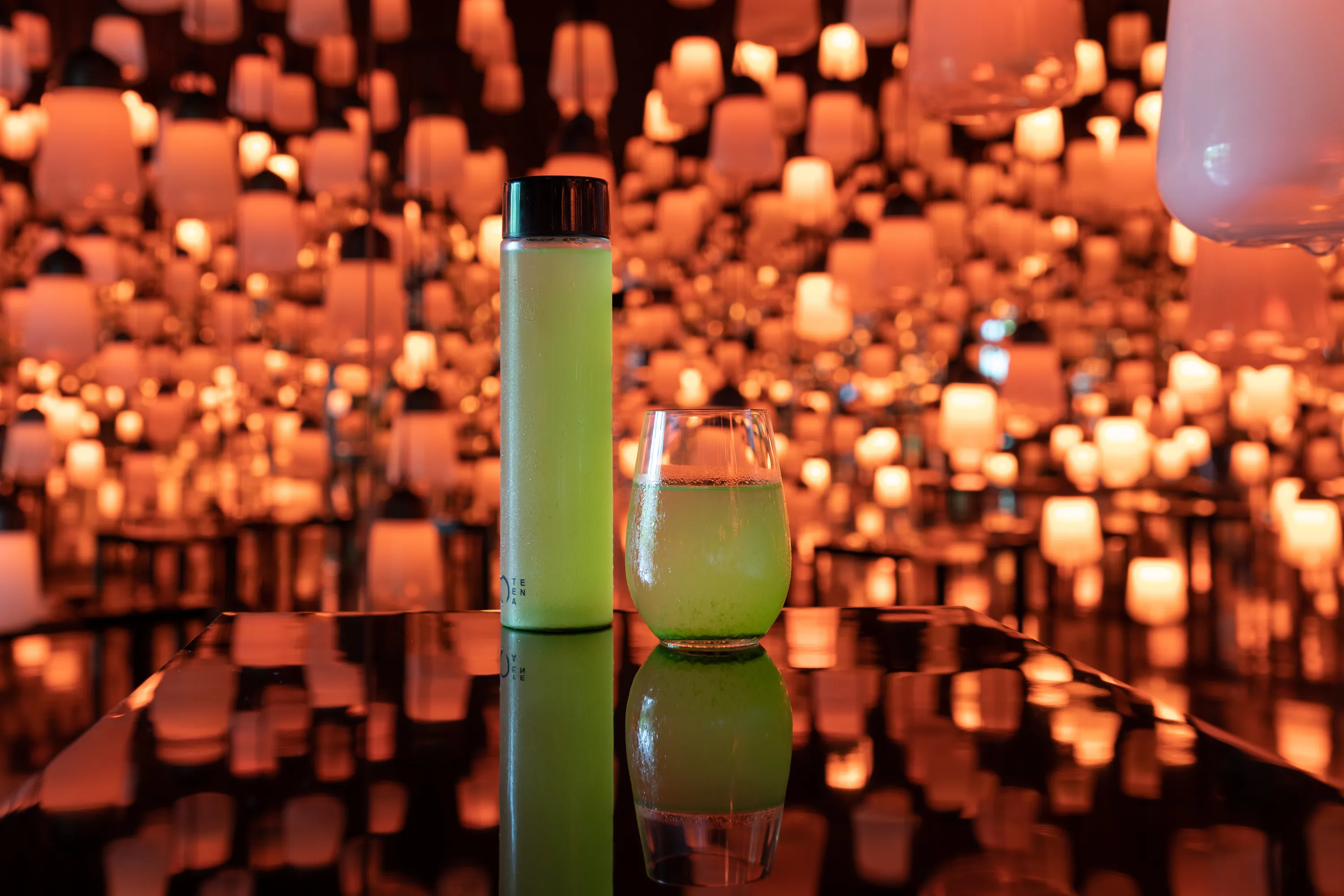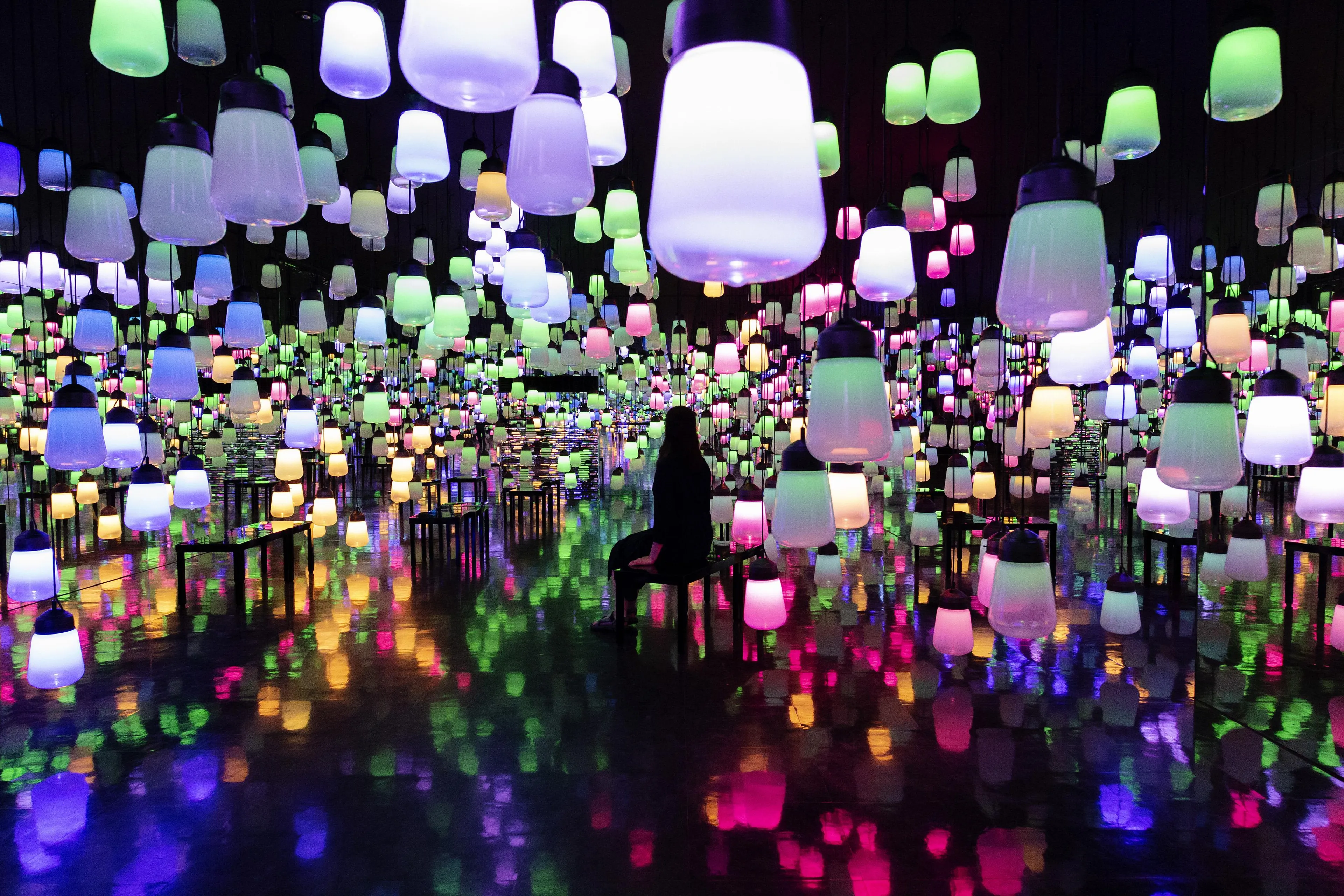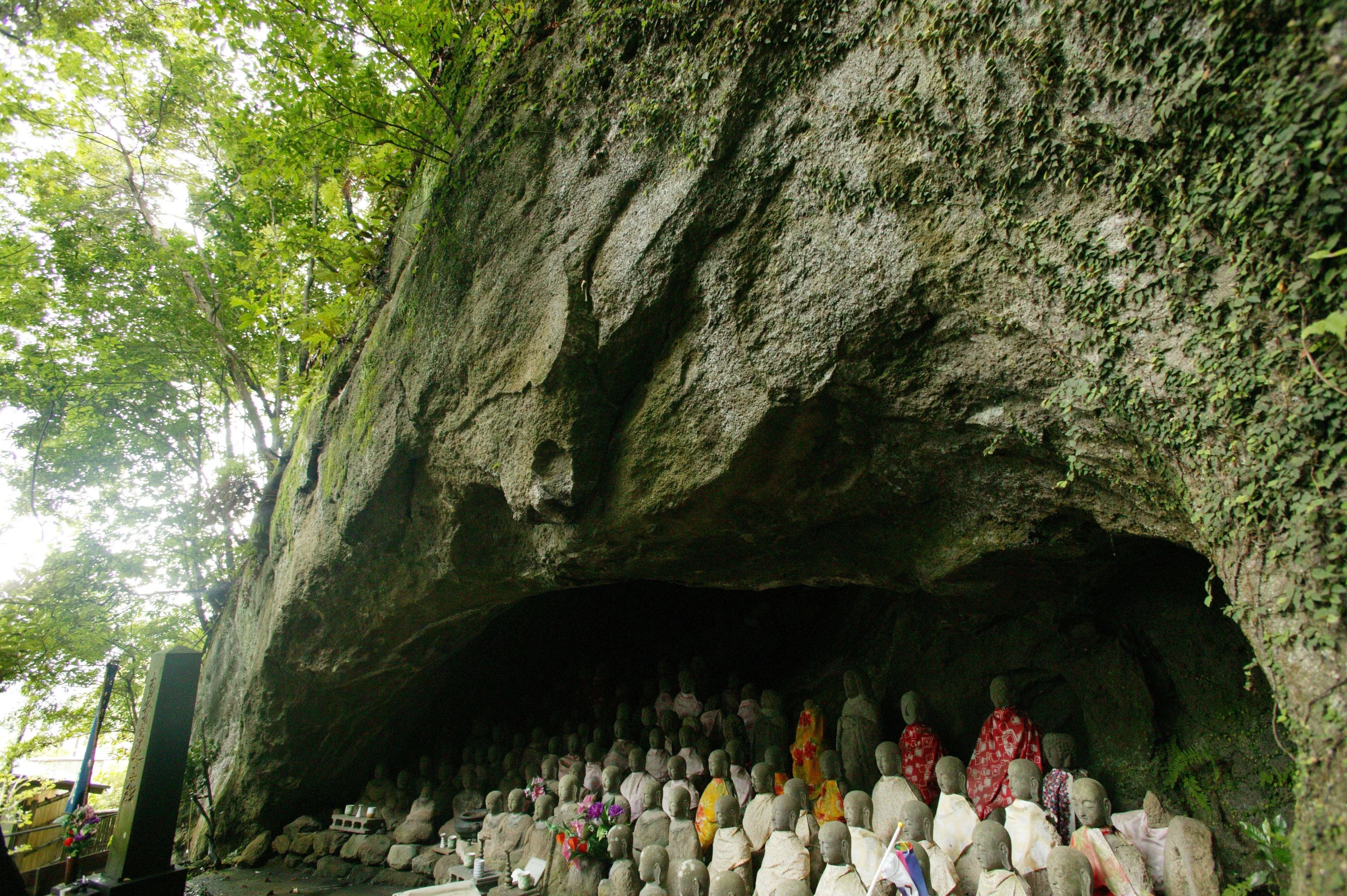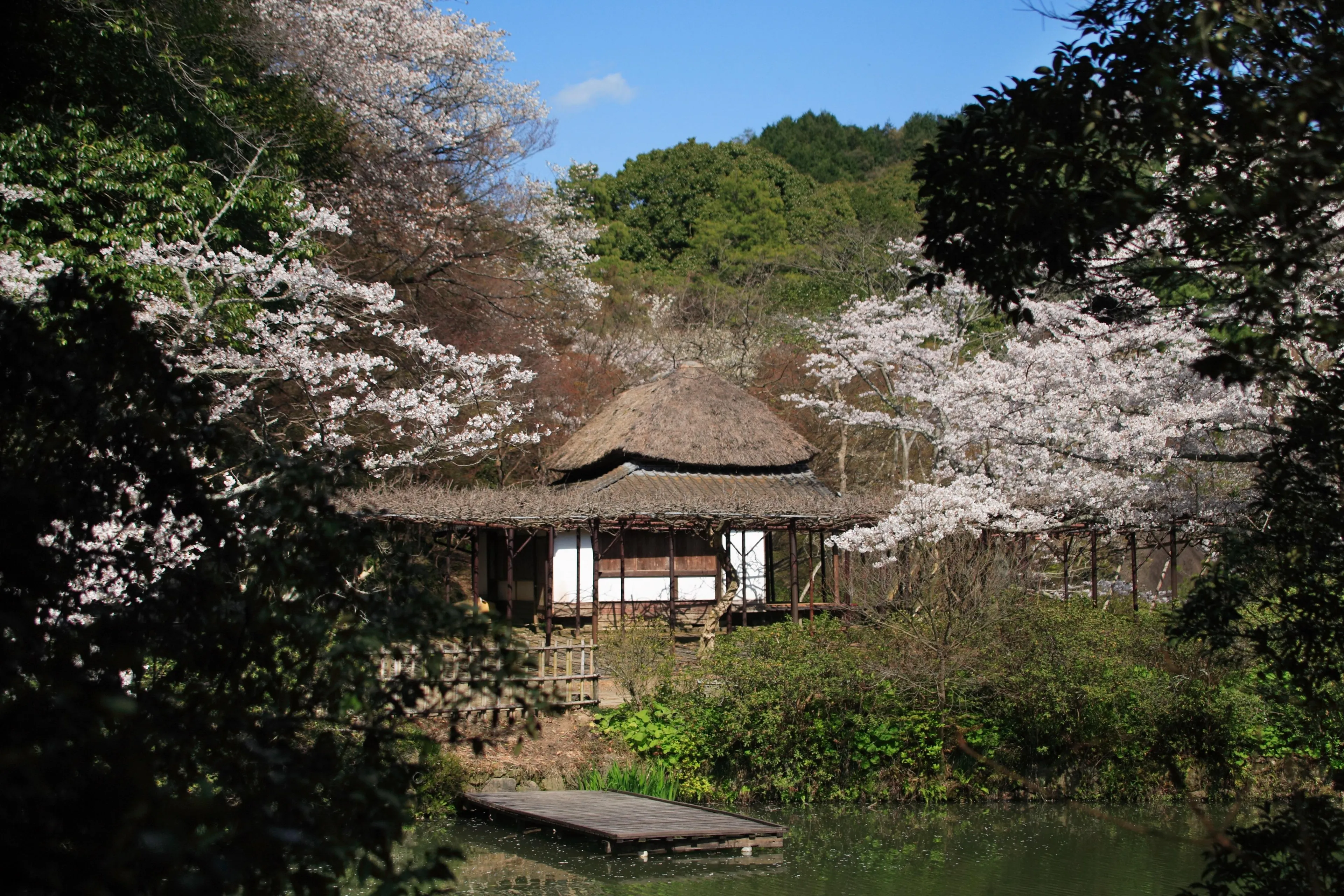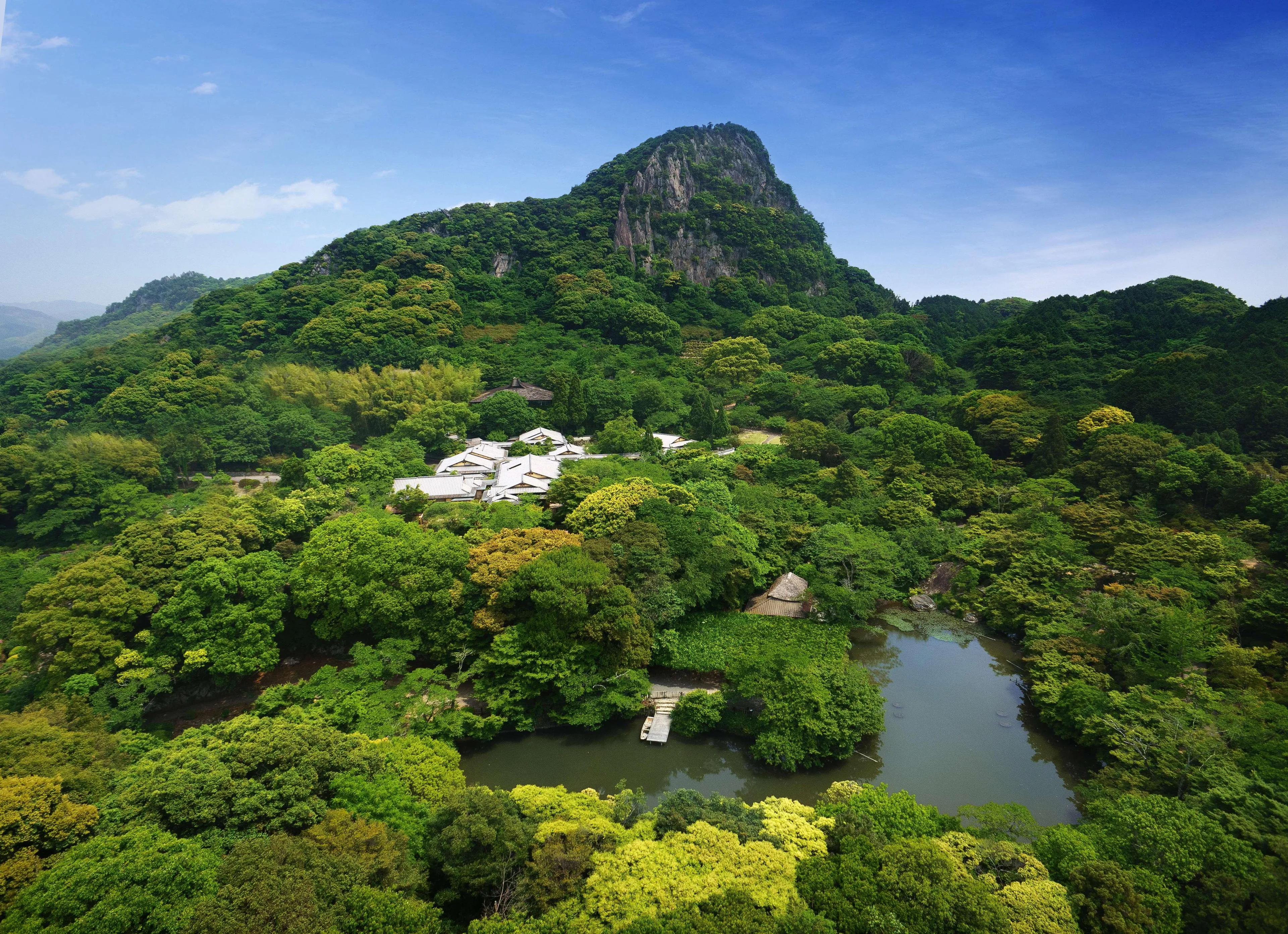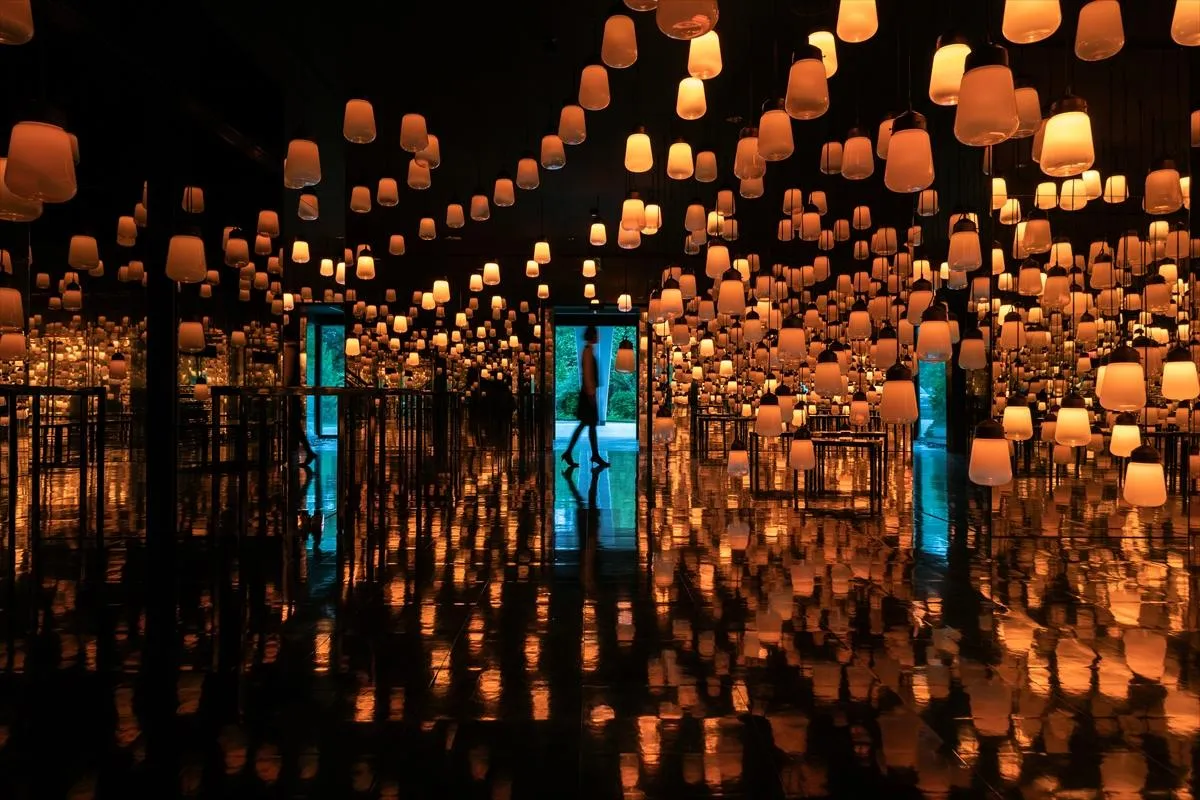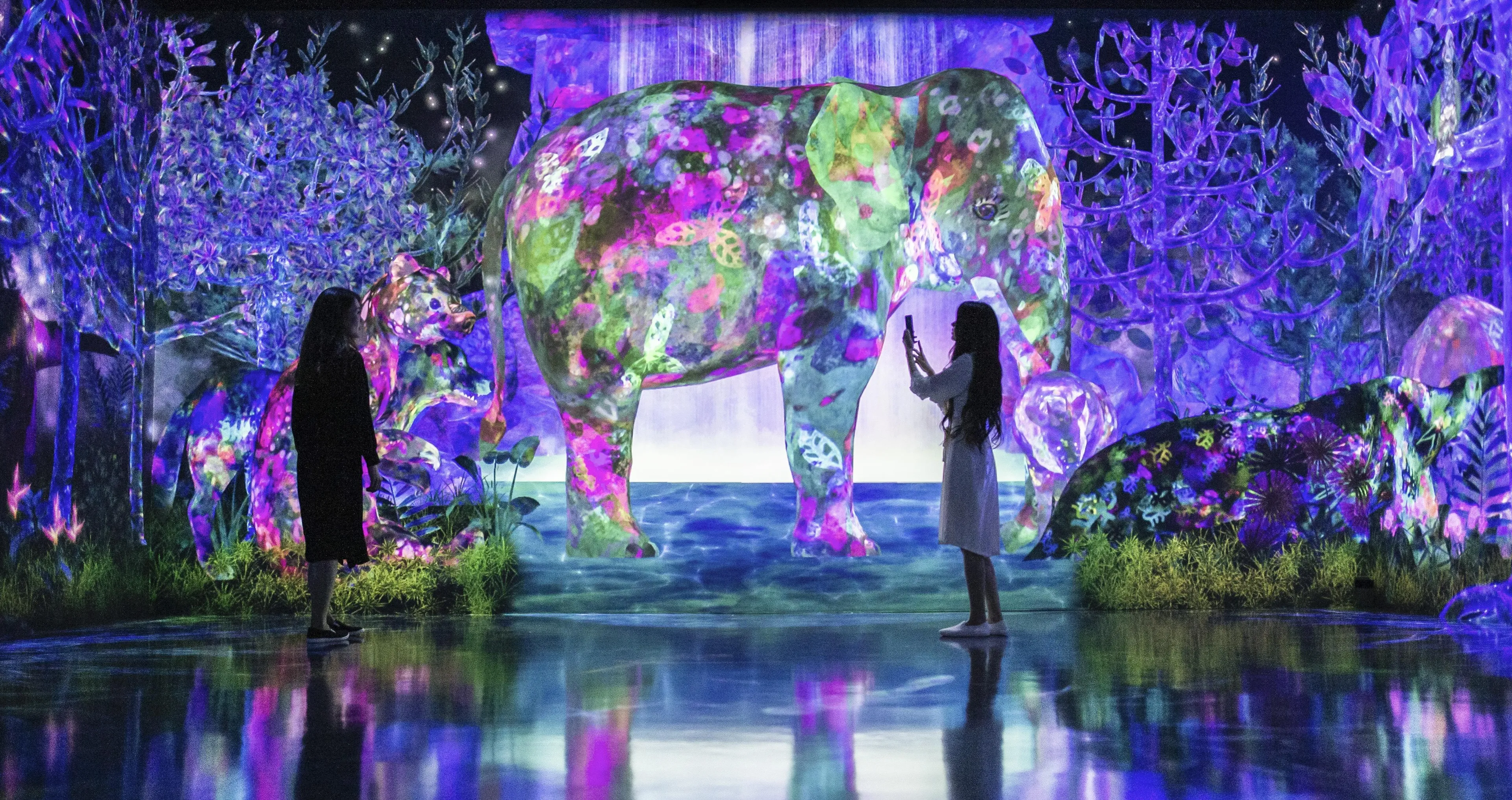The 500,000 square meter Mifuneyama Rakuen Park was created in 1845, during the end of the Edo period. Sitting on the borderline of the park is the 3,000-year-old sacred Okusu tree of Takeo Shrine, which is Japan’s 7th largest. Also in the heart of the garden is another 300-year-old sacred tree. Knowing the significance of this, our forebears turned a portion of this forest into a garden, utilizing the trees of the natural forest. The border between the garden and the wild forest is ambiguous, and when wandering through the garden, before they know it, people will find themselves entering the woods and animal trails.
Within the forest, there is an enormous megalith, almost supernatural in its formation, known as an iwakura (a dwelling place of a god in ancient Japanese nature worship, or “animism”) that has been preserved as a small shrine. Around the 7th century, a sorcerer named En-no-gyouza-ozunu carved a 23m tall figure over the entire surface of a sheer cliff on Mount Mifuneyama. And 1300 years ago, the priest Gyoki, who created the Great Buddha in Nara, came to Mifuneyama, carved 500 Arhats and Buddha figures directly onto the rock face of the caves within the forest, which remain to this day. On the edge of the forest, the stone gate of Tsuzaki Castle and other ruins remain within and along the borderline of the forest.
We exist as a part of an eternal continuity of life and death, a process which has been continuing for an overwhelmingly long time. It is hard for us, however, to sense this in our everyday lives, perhaps because humans can not recognize time longer than their own lives. There is a boundary in our understanding of the continuity of time.
The forest is home to 3,000-year-old trees, and it changes daily with the imperceptible, slow flow of time, repeating every year, as a space where the endlessly long time accumulates. The ruins from ages past scattered in the forest and the Edo-period garden which remains today each have their own respective space-times. The bath house in the garden was constructed in modern times, but after just a short period, it was abandoned, becoming a space where time had stopped completely.
Within the space of the ruins of Mifuneyama Rakuen, we make artworks with their own, separate space-times, thereby creating a place where these varying spaces intersect and overlap, allowing us to transcend the boundary in our understanding of the continuity of time.
teamLab
